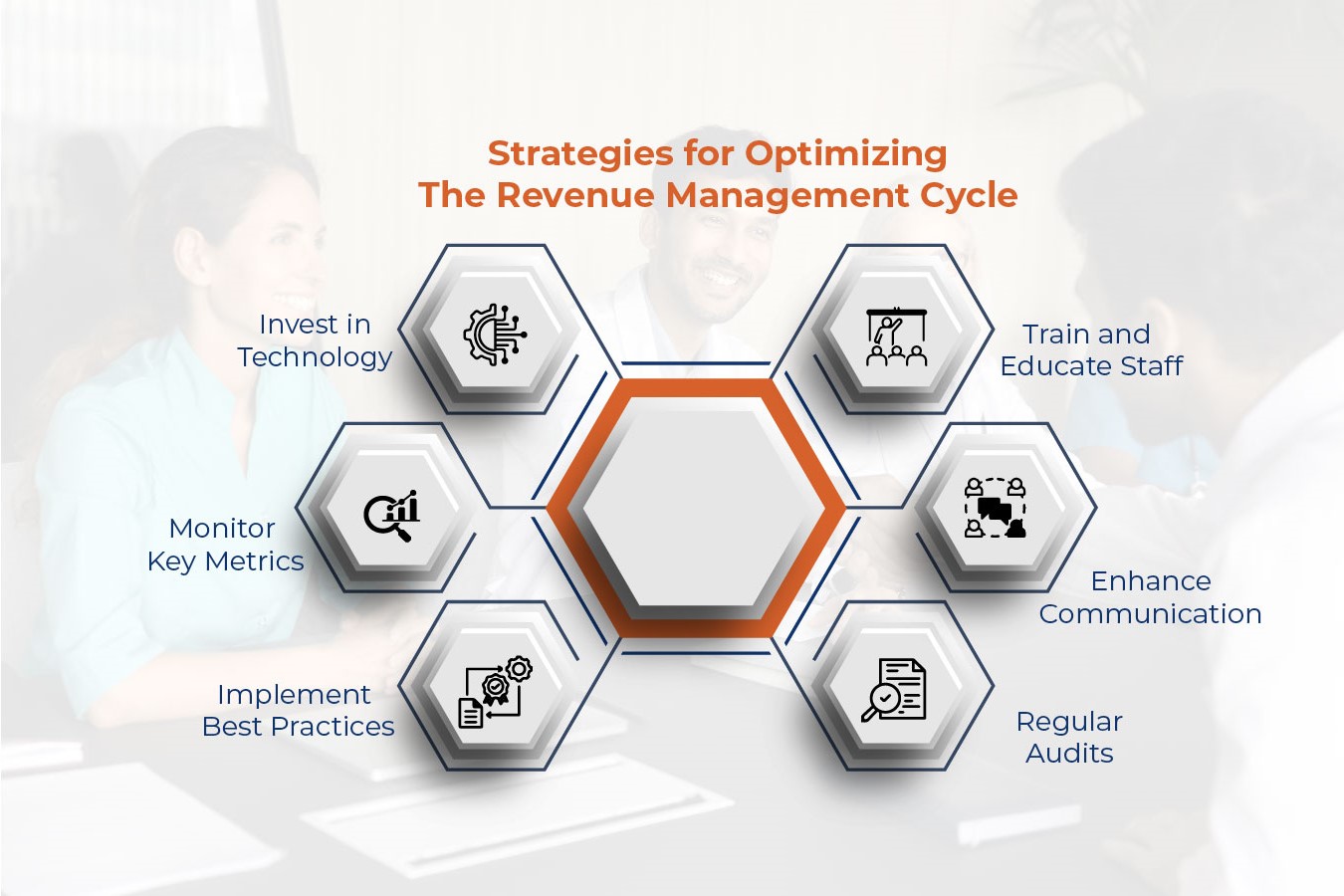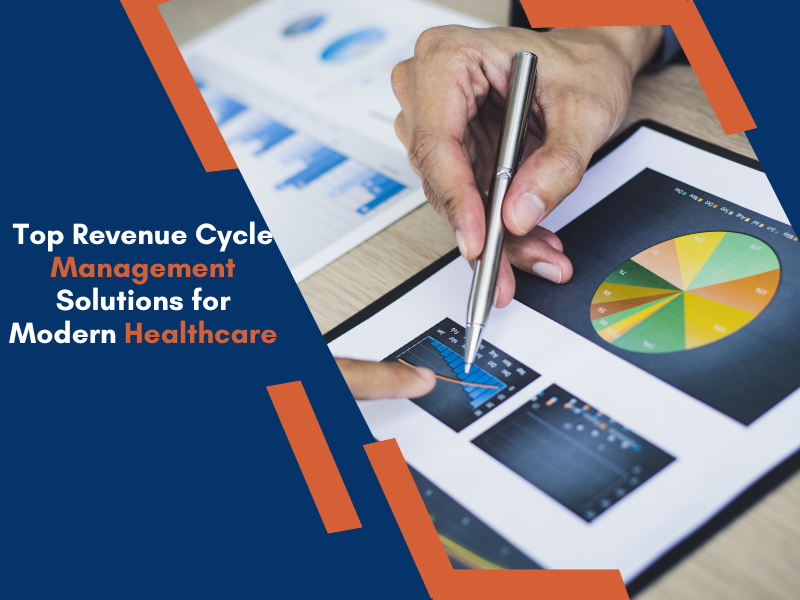Revenue management is crucial in the healthcare sector, where efficient financial practices can significantly impact patient care quality and operational sustainability. The revenue management cycle in healthcare involves various processes aimed at optimizing revenue, reducing losses, and ensuring the smooth operation of medical facilities.
In this blog, we’ll explore the intricacies of this cycle, its key components, and strategies for improvement.
What is the Revenue Management Cycle in Healthcare?
The revenue management cycle in healthcare refers to the comprehensive process of managing financial transactions from patient care initiation to payment collection. It encompasses all stages of revenue generation, including patient registration, billing, and payment follow-up. Effective management of this cycle is essential for healthcare providers to maintain financial health and offer high-quality patient care.
Key Components of the Revenue Management Cycle
- Patient Registration and Scheduling
The revenue management cycle begins with patient registration and scheduling. Accurate and timely registration of patient information is critical for effective billing and payment processes. This stage includes capturing patient demographics, insurance details, and appointment scheduling. Proper registration helps reduce claim denials and ensures that all relevant information is available for billing. - Verification of Insurance and Eligibility
Before providing services, healthcare providers must verify the patient’s insurance coverage and eligibility. This step involves checking insurance plan details to ensure the services offered are covered and to determine the patient’s financial responsibility. Proper verification helps prevent billing errors and claim rejections. - Coding and Documentation
Accurate coding and documentation are pivotal in the revenue management cycle in Healthcare. Healthcare providers must use standardized coding systems (such as ICD-10, CPT, and HCPCS) to document diagnoses and procedures. This ensures that claims submitted to insurance companies are precise and reflect the services provided. Proper coding minimizes the risk of claim denials and delays. - Claims Submission and Follow-Up
Once the coding is complete, the next step is submitting claims to insurance companies. This process involves preparing and transmitting electronic or paper claims based on the services provided. Timely and accurate submission is crucial for receiving prompt payment. Additionally, following up on claims to address any issues or denials is essential for maintaining a steady revenue flow. - Payment Posting and Reconciliation
After receiving payments from insurance companies or patients, the next phase is payment posting. This involves recording payments and adjusting patient accounts accordingly. Reconciliation ensures that payments match the billed amounts and resolves any discrepancies. Accurate payment posting and reconciliation are vital for financial accuracy and transparency. - Patient Billing and Collections
For any remaining balances not covered by insurance, healthcare providers must bill patients directly. This includes generating and sending statements, managing payment plans, and addressing patient inquiries or disputes. Efficient patient billing and collections help reduce bad debt and improve cash flow. - Accounts Receivable Management
Effective management of accounts receivable (AR) is critical in the revenue management cycle. This involves monitoring outstanding balances, identifying overdue accounts, and implementing strategies to accelerate collections. Regular review and management of AR help maintain financial stability and ensure timely revenue realization. - Reporting and Analytics
The final component of the revenue management cycle involves reporting and analytics. Healthcare providers need to generate reports on financial performance, billing accuracy, and claims status. Analyzing this data helps identify trends, assess revenue cycle efficiency, and make informed decisions to optimize financial operations.

Challenges in the Revenue Management Cycle in Healthcare
While the revenue management cycle is essential for healthcare financial health, it comes with its own set of challenges:
- Complex Regulations: Healthcare billing and coding involve navigating complex regulations and payer requirements, which can lead to errors and claim denials.
- Claim Denials and Rejections: Handling denials and rejections requires time and resources, impacting overall revenue and administrative efficiency.
- Billing Errors: Inaccurate coding or documentation can lead to billing errors, resulting in delays and potential revenue loss.
- Patient Financial Responsibility: Increasing patient financial responsibility and high-deductible plans can lead to challenges in patient collections and revenue realization.
Strategies for Optimizing the Revenue Management Cycle
To overcome these challenges and enhance the efficiency of the revenue management cycle in Healthcare, healthcare providers can implement several strategies:
- Invest in Technology: Leveraging revenue cycle management (RCM) software and electronic health record (EHR) systems can streamline processes, improve accuracy, and reduce the administrative burden.
- Train and Educate Staff: Regular training for staff on coding, billing procedures, and compliance can help minimize errors and improve overall efficiency.
- Monitor Key Metrics: Tracking key performance indicators (KPIs) such as days in accounts receivable, claim denial rates, and collection ratios can provide insights into areas needing improvement.
- Enhance Communication: Clear communication between billing staff, healthcare providers, and patients can help address issues promptly and reduce misunderstandings.
- Implement Best Practices: Adopting best practices for coding, claims submission, and patient collections can lead to more accurate and timely revenue realization.
- Regular Audits: Conducting regular audits of the revenue management cycle can help identify and address any inefficiencies or compliance issues.

Conclusion
The revenue management cycle in healthcare is a critical component of maintaining financial stability and ensuring the delivery of high-quality patient care. By understanding its key components and addressing common challenges, healthcare providers can implement effective strategies to optimize their revenue cycle. Investing in technology, training, and best practices can lead to improved financial outcomes and a more efficient revenue management process.
FAQs
What is the revenue management cycle in healthcare?
The revenue management cycle in healthcare is a comprehensive process that manages financial transactions from patient registration to payment collection, ensuring optimal revenue and financial stability for healthcare providers.
Why is accurate coding important in the revenue management cycle?
Accurate coding ensures that diagnoses and procedures are correctly documented using standardized systems like ICD-10 and CPT, reducing claim denials and delays in reimbursement.
How can healthcare providers reduce claim denials?
Healthcare providers can reduce claim denials by verifying insurance eligibility, ensuring accurate coding, and promptly addressing errors or discrepancies during claims submission and follow-up.
What challenges are common in the revenue management cycle?
Common challenges include navigating complex regulations, managing claim denials, addressing billing errors, and collecting payments from patients with high-deductible plans.
How can technology optimize the revenue management cycle?
Technology such as revenue cycle management (RCM) software and electronic health record (EHR) systems streamlines processes, improves accuracy, and reduces administrative workload, leading to enhanced efficiency and revenue realization.





